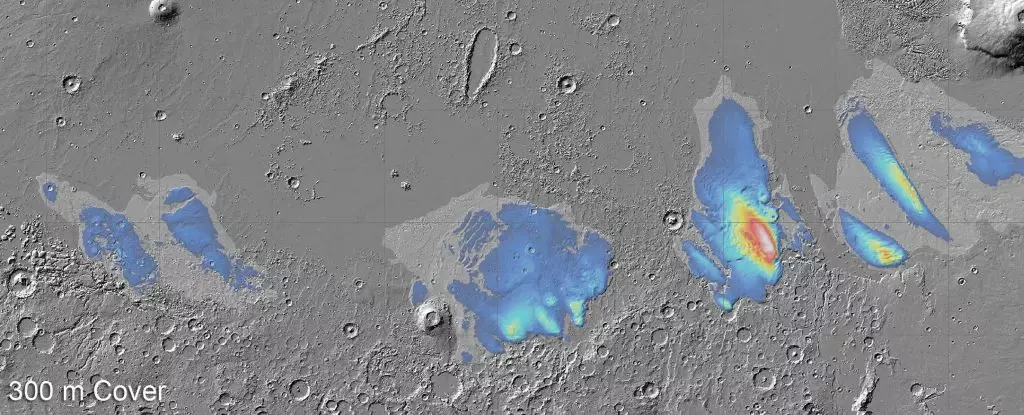The surface of Mars has always intrigued scientists, and recent advancements in technology have allowed us to uncover some of the planet’s hidden secrets. One of the most exciting discoveries is the presence of giant layered slabs of buried water ice in the Medusae Fossae Formation region on Mars’ equator. This finding challenges our previous belief that Mars was completely devoid of water. In fact, scientists estimate that there is as much water buried in this region as can be found in Earth’s Red Sea. In this article, we delve into the details of this discovery and its implications for our understanding of Mars.
The Medusae Fossae Formation: A Mystery Unraveled
Covering a vast area of 5,000 kilometers along Mars’ equator, the Medusae Fossae Formation separates the lowlands in the northern hemisphere from the cratered highlands in the south. These massive deposits, standing several kilometers high, have long raised curiosity among scientists. In 2007, radar data collected from the region hinted at the presence of something buried beneath the Martian surface. However, its nature remained unclear. It could have been buried dust, volcanic material, sediment from a wetter era in Mars’ history, or even water ice.
An Unexpected Discovery
To shed light on the nature of the buried deposits, scientists collected new radar observations and subjected them to thorough analysis and modeling. Surprisingly, the results strongly suggested the presence of water ice. The depth of the deposits, up to 3.7 kilometers thick, defied expectations. If the deposits were composed solely of dust, they would have compacted under their own weight, resulting in a much denser structure. Only ice could explain the observed properties of the Medusae Fossae Formation.
Mars’ Enigmatic History
The discovery of water ice in the Medusae Fossae Formation has significant implications for our understanding of Mars’ history and its transformation to its current state. Mars exploration in recent decades has revealed evidence of water in various forms, including rivers and lakes. However, the disappearance of this water remains a mystery. Did it evaporate into space or become sequestered inside the planet? Studying the Medusae Fossae Formation offers a potential glimpse into Mars’ past and clues about the fate of its water.
Aside from its scientific implications, the search for water on Mars also has practical implications for future human missions to the planet. Water is a precious resource, essential for human survival. If water already exists on Mars, it would significantly reduce the amount that needs to be transported from Earth. Unfortunately, the water ice in the Medusae Fossae Formation is currently inaccessible, buried beneath several hundred meters of dust. However, this discovery provides hope that water may be hiding in other locations on Mars, waiting to be uncovered.
The newfound knowledge about the Medusae Fossae Formation raises as many questions as answers. How long ago did these ice deposits form? What was Mars like at that time? By addressing these questions, scientists hope to gain insights into Mars’ climate history and better understand the planet’s evolution. The discovery of water ice in such significant quantities challenges our previous assumptions and pushes us to rethink what we know about Mars.
The recent radar survey of the Medusae Fossae Formation on Mars has revealed the presence of massive deposits of buried water ice. This discovery changes our perception of Mars as a dry and barren planet, shedding light on its enigmatic past and raising hopes for the existence of water in other regions. As we continue to explore Mars, this newfound knowledge will guide our quest to uncover the secrets of this fascinating planet.


Leave a Reply